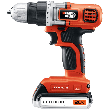A squeaky floor can be a truly annoying thing for most people, though many parents can find it a bit of a blessing when their children try to sneak out for the night. However, even that limited blessing can wear off over time. Fixing squeaky flooring isn't all that difficult of a task, and one that just about anyone can do. Just make sure that you follow these simple directions.
Keep in mind, that most of these directions will require that you also work from underneath the floor, so you may have to do some additional work to access that point. That additional work will not be detailed here though.
- Fix the joist directly. Often times squeaky flooring is caused by the subflooring becoming separated from the floor joists, which causes the nails to squeak as they go in an out of the holes in the joists. If the gap between the flooring and the joist is large enough, you can simply fasten an appropriately sized piece of scrap flooring to the joist. Make sure that the flat edge of the scrap wood is flush against the flooring, and then attach it to the joist. You may want to use screws instead of nails as they are less likely to work themselves loose over time.
- Use a shim. If the gap between the joist and the flooring is small enough, you can simply slide in a shim to help make things nice and tight. Apply a bit of wood glue or construction adhesive to the shim, and then slide it into the gap. Be careful that you don't force the shim too much or you can end up making the gap wider. Ideally, you will want to use a shim that is difficult to push in, but one that you don't have to force into the space.
- Reattach the floor and subfloor. Sometimes the flooring and the subflooring can become separated, and this can cause the squeaking. The easiest way to fix this problem is to use a screw that won't go all the way through both the flooring and the subflooring, but is long enough to attach the two. Simply locate the place that they are separated, and then insert the screw into that location. If the separation is large enough, you may need to use more than one screw. Do not place these screws closer than six inches to each other.
Author Bio
Lee Wyatt
Contributor of numerous Tips.Net articles, Lee Wyatt is quickly becoming a regular "Jack of all trades." He is currently an independent contractor specializing in writing and editing. Contact him today for all of your writing and editing needs! Click here to contact. Learn more about Lee...
Kitchen Cleaning Supplies
An often overlooked aspect of cooking is the one part that always comes last—the clean up. Cleaning your kitchen ...
Discover More
Cleaning a Baseball Glove
Baseball gloves are an integral part of America's traditional pastime, baseball. However, they also tend to be a bit ...
Discover More
Cooking for Those with Celiac Disease
Cooking for those with celiac disease is possible, though it will often require a bit of ingenuity on your part, is ...
Discover More
More Home Improvement Tips
Choosing Discount Hardwood Floors
While we may like to be able to purchase the most expensive hardwood flooring possible, there are times when we have to ...
Discover More
Installing a Decorative Border
Are you having some hardwood floors installed? If so, then you may want to consider installing a decorative border. A ...
Discover More
Repairing Damaged Carpet
Just because you get a burn mark or worn area in your carpet doesn't mean you need to get new carpet. Here's some ideas ...
Discover More

Comments